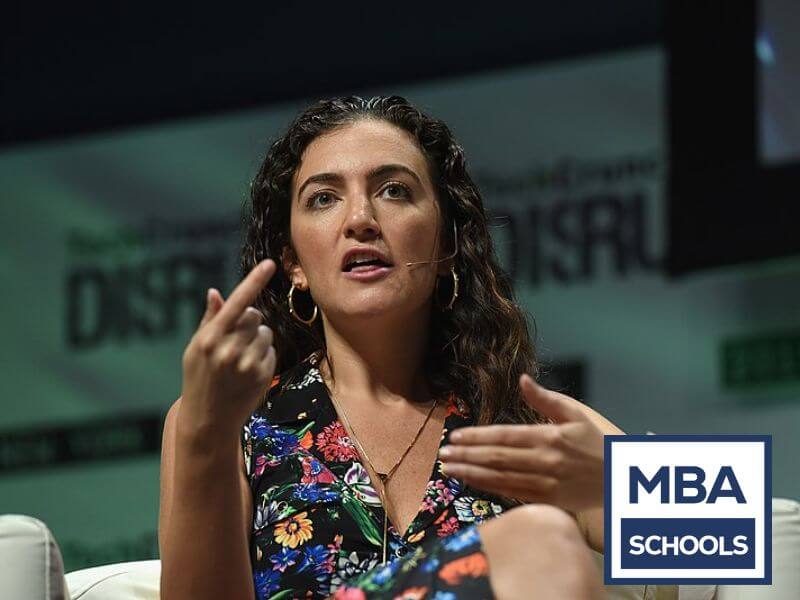Jennifer Hyman: How an MBA Network Built Rent the Runway
Table of Contents
Background: From Business School to Billion-Dollar Founder

Jennifer Hyman, the co-founder and CEO of Rent the Runway, is one of the most notable examples of how an MBA network can help turn an idea into a thriving company. Before attending Harvard Business School (HBS), Hyman worked in media and had no experience in the fashion industry. However, during her time at HBS, she met Jenn Fleiss, her future co-founder, and together they developed the concept of Rent the Runway.
The idea was simple but innovative: Instead of women spending thousands of dollars on high-end designer clothing for special occasions, why not allow them to rent these pieces for a fraction of the cost? The concept of a clothing rental service for luxury fashion had never been done at scale, and Hyman saw an opportunity to disrupt the retail industry.
However, launching a business of this scale required industry insights, mentorship, funding, and strong corporate partnerships—all of which Hyman found through her MBA network.
Leveraging Her MBA Network to Launch Rent the Runway
Rather than waiting until graduation to start her business, Hyman used her time at Harvard Business School as a real-world incubator. She and Fleiss actively leveraged the HBS ecosystem to refine their idea, seek industry expertise, and secure early-stage funding.
Here’s how they did it:
1. Consulting Professors and Alumni for Business Insights
One of Hyman’s first steps was to seek guidance from the Harvard faculty. She and Fleiss spoke to over 50 professors in various fields, from marketing and operations to entrepreneurship and finance, to develop a business model that was both scalable and profitable.
Additionally, Hyman turned to the HBS alumni network, which gave her access to retail and fashion industry veterans who could provide direct feedback on the viability of their business idea. This mentorship helped her understand potential challenges, refine the customer experience, and position Rent the Runway as an attractive business opportunity.
2. Securing Partnerships in the Fashion Industry
One of the most significant barriers to launching Rent the Runway was convincing high-end designers to collaborate. Many luxury brands resisted the idea of rentals, fearing that it would devalue their products. However, through HBS alumni connections and networking events, Hyman secured a meeting with Diane von Furstenberg, a legendary fashion designer who provided key insights.
Von Furstenberg warned Hyman that fast fashion was eroding the high-end market, and Rent the Runway’s model could benefit designers by introducing new customers to their brands. This pivotal conversation helped Hyman craft her pitch to other designers, emphasizing the marketing value of rentals rather than their perceived threat.
3. Using Alumni Networks to Attract Investors
Hyman and Fleiss needed significant capital to launch Rent the Runway at scale. Thanks to Harvard’s deep alumni network in venture capital, they connected with influential investors who understood the business’s potential.
- Bain Capital Ventures, a firm with strong HBS ties, was one of the earliest investors in Rent the Runway, helping it scale quickly.
- The credibility of being an HBS-backed startup also opened doors to further funding rounds, leading to investments from Andreessen Horowitz, TCV, and Highland Capital Partners.
By tapping into the Harvard investor ecosystem, Hyman raised millions in venture capital, positioning Rent the Runway as a serious disruptor in the retail space.
The Growth of Rent the Runway
Rent the Runway quickly expanded into a fashion-tech giant from its humble beginnings. Hyman and Fleiss launched the company in 2009, and within a decade:
- Rent the Runway became a unicorn startup, achieving a $1 billion valuation by 2019.
- It expanded its model beyond one-time rentals to include subscription services, allowing customers to rent everyday fashion.
- In 2021, Rent the Runway went public, cementing its place as a major player in the industry.
Throughout this journey, Hyman relied on her MBA network for strategic guidance, mentorship, and funding rounds, proving that an alumni network is useful for launching a business and sustaining and scaling it.
Lessons for MBA Students and Entrepreneurs
Jennifer Hyman’s story offers valuable lessons for MBA students and aspiring entrepreneurs:
- Leverage Your Professors and Alumni for Expert Advice – Hyman consulted over 50 professors to refine her business model, proving that a school’s faculty can be invaluable.
- Use Your Network to Open Industry Doors – Hyman’s Harvard connections helped her secure meetings with top designers, a crucial step in gaining industry acceptance.
- Tap into Alumni for Funding – The early investments in Rent the Runway came from firms with HBS ties, demonstrating the power of an MBA network in securing venture capital.
- Continue Using Your Network Beyond Graduation – Hyman continued to rely on mentors and investors from her HBS network long after launching Rent the Runway, ensuring that she had ongoing support.
- Think of Business School as an Incubator – Instead of waiting until after graduation to pursue an idea, Hyman used her MBA experience to launch and scale Rent the Runway in real-time.
Final Thoughts
Jennifer Hyman’s journey from an MBA student with an idea to a founder of a billion-dollar company is a testament to the power of strategic networking, alumni mentorship, and leveraging business school resources. Her story proves that an MBA is not just about acquiring knowledge—it’s about building relationships that can accelerate careers and turn ambitious ideas into reality.
Stay informed with expert insights on MBA programs, career development, and leadership opportunities. Whether you're evaluating schools, preparing for admissions, or exploring career paths after graduation, our carefully selected articles offer valuable guidance to help you make informed decisions and maximize your MBA investment.
View all articles


